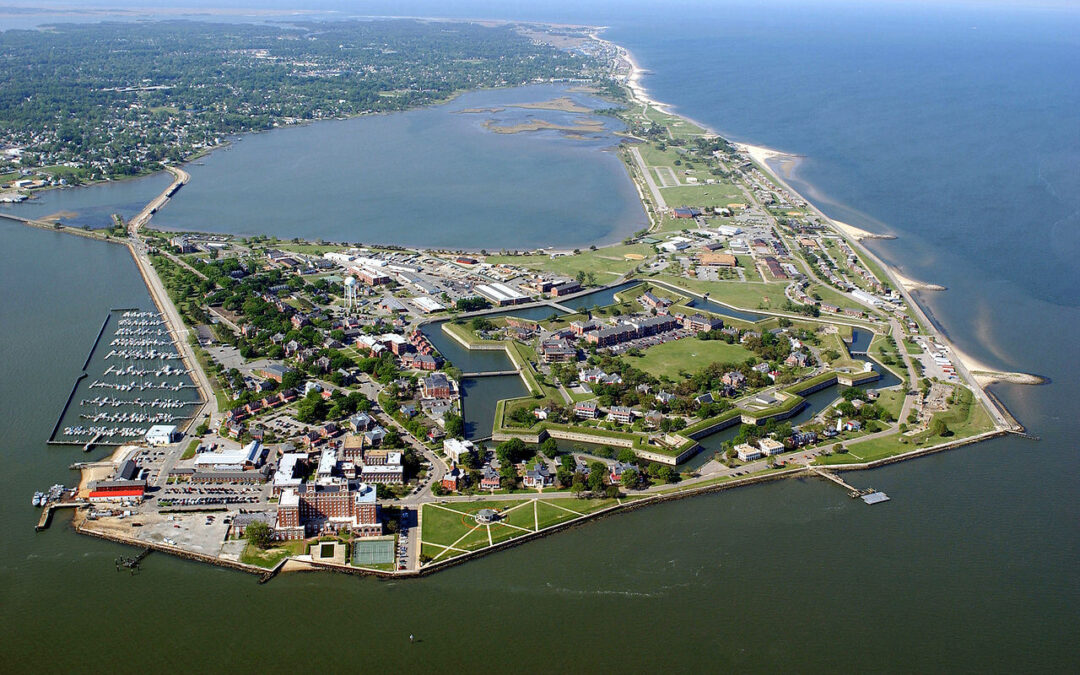By Charlie Paullin
A new Hampton program aims to help residents address shoreline erosion by allowing some funds to be provided upfront rather than solely requiring them to pay for improvements themselves and then seek reimbursement.
The funds are available through the state’s Virginia Conservation Assistance Program, which traditionally distributes money to multiple soil and water conservation districts — the regional divisions charged with protecting land and water.
But this year the state allowed Hampton residents to avail themselves of the funds through a partnership with the neighboring Colonial Soil and Water Conservation District, which serves York, James City, New Kent and Charles City counties.
Under the partnership, up to 10 Hampton property owners could be eligible to receive reimbursement for up to 80% of the costs of installing a living shoreline from the state. Awards can’t exceed $30,000.
What’s also new is that property owners can receive funding for up to half of the costs of installing a living shoreline upfront, not to exceed $15,000.
Sometimes, property owners can’t pay for projects upfront or have to take out loans to cover them, acknowledged Robyn Woolsey, an urban conservationist with the Colonial Soil and Water Conservation District.
“That can often be a really huge barrier for property owners who want to install living shorelines and go that route,” said Woolsey.
Living shorelines are manmade but mimic natural resources like marshes to provide stability of coastlines against waves through the strategic placement of plants, stone and sand. The shorelines’ absorption of the waves’ impact prevents further erosion of land and keeps sediment from entering waterways while also providing a more natural habitat for wildlife such as oysters, which naturally filter water.
Owners of shoreline areas that are susceptible to too much damage from waves are required by state law to install more stable structures like rip rap or piles of rock, explained Olivia Askew, a resiliency specialist for the city of Hampton. That’s the case for many areas around Hampton, which is located on the Chesapeake Bay.
But in areas with less risk of wave destruction, that state law requires the Virginia Marine Resources Commission to permit only living shorelines for shoreline management “unless the best available science shows that such approaches are not suitable.” When the exception is granted, the VMRC must require permitted projects to include “to the maximum extent possible, elements of living shoreline approaches.”
“The benefits to that are the ecosystem that it provides,” Askew said. “Rip rap and hardened shorelines sometimes does effectively control erosion. Living shorelines do that as well, but have these added benefits of creating habitat, filtering out pollutants that may get into our waterways by stormwater runoff. Also people find that they’re a beautiful habitat to look out over.”
The state law to require living shorelines received pushback from many of Virginia’s coastal residents, as estimates for living shorelines can sometimes reach about $70,000, the Bay Journal reported. A Maryland law similar to Virginia’s allowed residents to seek a waiver under certain conditions.
Nevertheless, Virginia has stuck with the 2020 law, and with climate change leading to rising sea levels and increasing stormwater runoff from heavy rainfalls, the city of Hampton has already begun work to install living shorelines.
In October 2021, the Virginia Department of Conservation and Recreation awarded Hampton about $126,000 for its Mill Point Living Shoreline, which will be built along a park and residential area and include an oyster reef. The funding is coming from revenues generated by the state’s participation in the Regional Greenhouse Gas Initiative.
The $126,000 will go toward preliminary engineering for a 2,100-foot-long living shoreline along the Hampton River by using an existing shoreline sill, or shelf. The city also recently received $1.5 million from the Department of Environmental Quality’s Stormwater Local Assistance Fund to cover the rest of design costs and almost completely fund construction of the estimated $2 million project.
The oyster reef “will grow on the sill to help the sill rise with rising seas levels and provide an efficient filtering capacity to the Hampton River,” Hampton City Manager Mary Bunting wrote in her application for the funding. “This holistic system will be adding storage, reducing runoff, treating runoff, and providing community amenities while demonstrating living with water is an essential resilience strategy in coastal Virginia.”
This article is republished courtesy of VirginiaMercury.com




